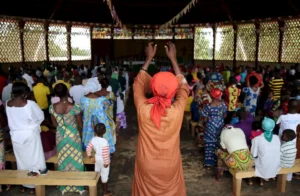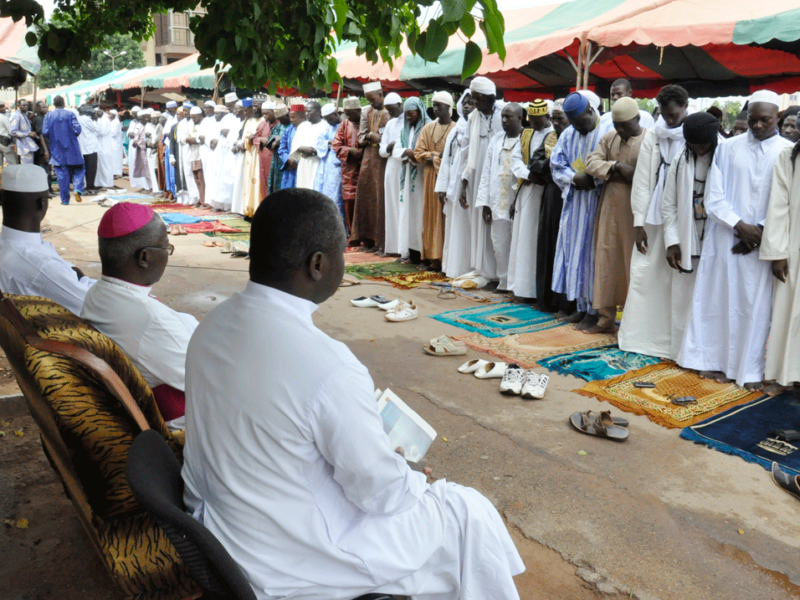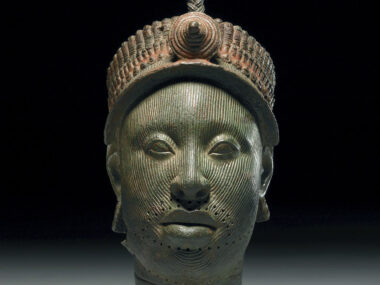Introduction
The coexistence of Christianity and traditional beliefs is a phenomenon observed in many cultures around the world. This dynamic interaction often leads to a unique blending of religious practices and cultural traditions. Examining this coexistence provides insights into the ways in which communities navigate their spiritual landscapes, reconcile differing worldviews, and create new forms of religious expression. This discussion will focus on various regions, highlighting how Christianity has integrated with traditional beliefs, the resulting syncretic practices, and the implications for cultural identity and social cohesion.

Africa
- Nigeria: Nigeria exemplifies the coexistence of Christianity and traditional beliefs. The country’s religious landscape is diverse, with Christianity, Islam, and indigenous religions coexisting. Many Nigerian Christians incorporate elements of traditional spirituality into their faith. For instance, ancestral veneration and the use of traditional symbols and rituals are often intertwined with Christian worship. This blending can be seen in practices such as the “Ogwugwu” (ancestral) rituals performed by some Igbo Christians alongside Christian ceremonies.
- Ethiopia: Ethiopian Christianity, primarily Ethiopian Orthodox, has coexisted with traditional beliefs for centuries. The Ethiopian Orthodox Church integrates numerous indigenous customs, such as the celebration of Timkat (Epiphany), which includes processions and rituals that predate Christianity. The church also venerates saints and holy sites with local significance, blending Christian and traditional elements seamlessly.
- Ghana: In Ghana, the coexistence of Christianity and traditional beliefs is evident in the practice of “African Traditional Religion” (ATR) alongside Christian worship. Many Ghanaians maintain belief in traditional gods and spirits while practicing Christianity. Festivals like Aboakyer, which involves a traditional deer hunt, are celebrated by communities that also participate in Christian church services, illustrating the harmony between these belief systems.
Latin America
- Mexico: In Mexico, the syncretism between Christianity and indigenous beliefs is most prominently seen in the celebration of Día de los Muertos (Day of the Dead). This festival, which honors deceased loved ones, combines elements of pre-Columbian rituals with Catholic practices. Altars (ofrendas) are set up with offerings, including food, flowers, and candles, reflecting both indigenous and Christian influences.
- Brazil: Brazil’s religious landscape is marked by the blending of Catholicism with Afro-Brazilian religions such as Candomblé and Umbanda. These religions incorporate elements of Catholicism, including the veneration of saints, which are often identified with African deities (orixás). The Festival of Yemanjá, honoring the sea goddess, is celebrated with processions and offerings, reflecting this syncretism.
- Peru: In Peru, indigenous Andean beliefs coexist with Catholicism. The Inti Raymi festival, originally an Incan celebration of the sun god, is now celebrated with Catholic elements, including masses and processions. The fusion of Catholic and Andean traditions is also evident in the widespread practice of folk Catholicism, where indigenous rituals and symbols are integrated into Christian worship.
Asia
- Philippines: The Philippines, predominantly Catholic, exhibits a unique blend of Christianity and pre-Hispanic animistic beliefs. The Ati-Atihan Festival, honoring the Santo Niño (Holy Child), includes tribal dances and rituals reminiscent of indigenous traditions. Many Filipinos also practice “Anito” worship, venerating spirits of ancestors and nature alongside Catholic saints.
- India: In India, the coexistence of Christianity and Hinduism can be observed in regions like Kerala, where the St. Thomas Christians have integrated Hindu customs into their practices. Christian weddings and festivals often incorporate Hindu rituals, such as the lighting of lamps and use of traditional Indian attire. This syncretism reflects the cultural and religious harmony in the region.
- Japan: Japanese Christianity often coexists with Shinto and Buddhist practices. Many Japanese Christians participate in traditional festivals like Obon, which honors deceased ancestors. Christian ceremonies, such as weddings, may also include Shinto rituals, demonstrating the fluidity between these belief systems.
Oceania
- Papua New Guinea: In Papua New Guinea, the coexistence of Christianity and traditional beliefs is evident in the incorporation of indigenous customs into Christian worship. Many communities practice “cargo cults,” which blend Christian doctrines with traditional beliefs about spirits and ancestors. Rituals such as the “Singsing” (traditional dance and music) are performed during Christian celebrations, reflecting this integration.
- Fiji: Fijian Christianity, primarily Methodist, coexists with indigenous Fijian spirituality. Traditional rituals, such as the presentation of kava (a ceremonial drink) and the veneration of ancestral spirits, are incorporated into Christian practices. This blending strengthens communal bonds and preserves cultural heritage within a Christian framework.
- Samoa: In Samoa, Christianity coexists with traditional Samoan religion and customs. The Samoan Christian Church incorporates traditional practices, such as the “ava ceremony” (kava drinking ritual) and the use of traditional mats and tapa cloth in church activities. This syncretism highlights the adaptability of religious practices to local cultural contexts.
North America
- United States: The United States is home to diverse communities where Christianity coexists with traditional beliefs. Native American Christians often integrate indigenous spiritual practices, such as smudging and drumming, into their Christian worship. This blending honors their cultural heritage while practicing their Christian faith.
- Canada: In Canada, Indigenous peoples incorporate traditional spirituality with Christianity. Many First Nations, Métis, and Inuit communities celebrate Christian holidays alongside traditional ceremonies, such as the Powwow, which includes prayer, dance, and drumming. This coexistence reflects the resilience and adaptability of Indigenous cultures.
- Haiti: In Haiti, the coexistence of Christianity and Vodou is a prominent feature of the religious landscape. Vodou, which blends African religious traditions with Catholicism, includes the veneration of spirits (lw
a) alongside Catholic saints. Rituals such as the “Fête Gede” (Festival of the Dead) demonstrate this syncretism, where Vodou ceremonies are often held in Catholic churches.
Europe
- Ireland: In Ireland, Christianity has coexisted with Celtic pagan traditions for centuries. Many Christian holidays, such as Christmas and Easter, incorporate elements of ancient Celtic festivals. The celebration of St. Brigid’s Day, for example, blends Christian and pagan customs, reflecting the integration of pre-Christian and Christian practices.
- Greece: In Greece, the coexistence of Christianity (Greek Orthodoxy) with ancient Hellenic traditions can be observed in various cultural practices. Festivals such as the “Panagia” celebrations (dedicated to the Virgin Mary) often include rituals and symbols that have roots in ancient Greek religion, illustrating the continuity and adaptation of cultural traditions.
- Russia: In Russia, the Russian Orthodox Church coexists with Slavic pagan traditions. Many Christian holidays, such as Maslenitsa (Butter Week), include pre-Christian rituals like the burning of effigies and traditional folk dances. This blending preserves cultural heritage while integrating it into the Christian calendar.
Conclusion
The coexistence of Christianity and traditional beliefs is a rich and complex phenomenon that reflects the adaptability and resilience of religious practices. Across the world, communities have found ways to harmonize different belief systems, creating unique forms of syncretic worship that honor their cultural identities. This coexistence not only preserves traditional customs but also enriches Christian practices, demonstrating the dynamic and evolving nature of faith. By examining these intersections, we gain a deeper understanding of the ways in which human societies navigate their spiritual landscapes, fostering cultural continuity and social cohesion.










